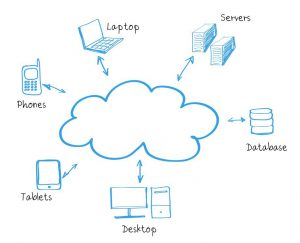Introduction:
This assignment requires students to choose a relatively complex term used within a specific discipline or field, and provide its definition in three forms (parenthetical, sentence, and expanded). This assignment aims to let students know the importance of definition in technical writing, as well as to improve students’ ability in differentiating different level of detail and in choosing appropriate level of detail based on the audience and purpose.
Situation:
In this hypothetical situation, the term “cloud computing” will be presented to audience with only basic literacy in computer.
Parenthetical Definition:
Emerging technologies such as cloud computing (computing resources hosted in remote data centres) will greatly reshape the IT industry.
Sentence Definition:
Cloud computing is computing using computation resources in a remote data centre, hosted by a specialized cloud service provider.
Expanded Definition:
What is cloud computing:
Traditionally, individuals or organizations that require computation resources will have in-house computers deployed in their locations to satisfy their needs, such as hosting websites. Cloud computing is the providing of such computation resources over internet from a remote data centres to individuals or organizations that requires such resources. It is usually offered by a cloud service provider at the cost of monthly subscription fee.

History of cloud computing:
The term “cloud computing” appeared in 1996, but was not popular until mid 2000s. In 2006, Amazon launched EC2 (Elastic Computer Cloud), which allowed people to rent virtual computers from their place and use their own programs online. Starting from that, people have seen a surge in number of cloud service providers.
Application of cloud computing:
There are many applications of cloud computing. Such as cloud storage (Dropbox, etc.), online gaming (Google Stadia), e-commerce websites, etc.
Benefits of cloud computing:
Cloud computing has benefits such as economies of scale, flexible resources, and faster innovation. With cloud computing, most of the computation resources will be built, ran, and maintained by dedicated service providers, thus lowering the cost of such resources. Also, the resources can be requested on an on-demand basis, a client that requires more resources temporarily may get it by paying more fees, instead of having to purchase more computers at their location. In this way, the resource is distributed in an efficient and flexible way. What is more, an organization that seeks innovation by developing a new software does not need to be concerned about buying new physical servers, instead they can directly rent servers from cloud services providers, which facilitates innovation.
Works cited:
“What is cloud computing?”, Microsoft Azure, (n.d.), https://azure.microsoft.com/en-us/overview/what-is-cloud-computing/
“The history of cloud computing”, Scality, (n.d.), https://www.scality.com/solved/the-history-of-cloud-computing
“Top 7 most common uses of cloud computing”, IBM, (n.d.), https://www.ibm.com/cloud/blog/top-7-most-common-uses-of-cloud-computing
Leave a Reply